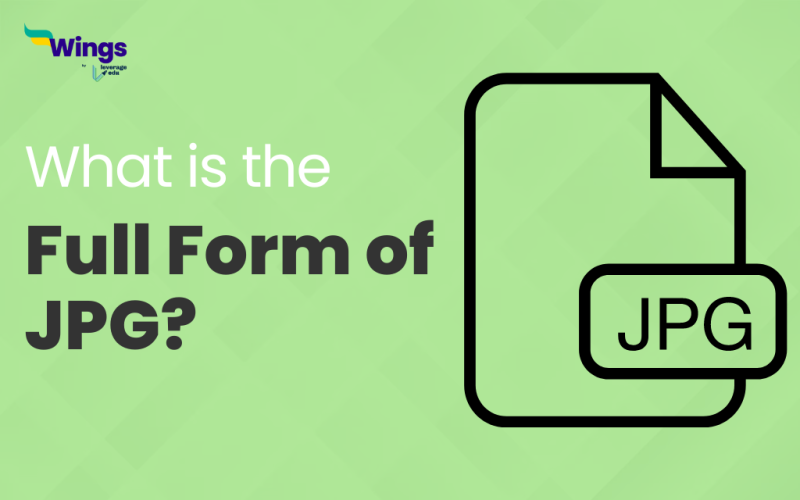JPG full form, or more precisely JPEG, is an abbreviation for Joint Photographic Experts Group. This group developed a standard method for compressing digital images. The Joint Photographic Experts Group, established in 1986, consists of experts from various industries, including telecommunications, computing, and photography, who work together to define standards for image compression and transmission.
Table of Contents [show]
Origin of JPEG
The JPEG format was born out of the need to efficiently store and transmit high-quality images. Prior to its development, image files occupied significant storage space and required considerable bandwidth for transmission. The introduction of the JPEG standard revolutionized the way images were stored and shared.
Characteristics of JPG
Some of the characteristics of JPEG are –
- It can be converted into different formats also.
- The most commonly employed JPEG file extensions include jpeg, and jpg, but .jpe, .jfif, and .jif extensions are also often used.
- JPEG reduces an image to a byte sequence and has the capability to reverse this process, returning the image to its original form.
- The specifications for JPEG outline the method for compressing the image into bytes and then decompressing it back into a photograph.
Also Read – What is Mpeg Full Form?
The Working Principle of JPG
JPEG compression utilizes a lossy compression algorithm, which means that it achieves smaller file sizes by discarding some image information that is deemed less important to human perception. This allows for a significant reduction in file size while maintaining acceptable image quality. The level of compression can be adjusted, allowing users to find a balance between file size and image fidelity.
Benefits of JPEG
The JPEG format offers several advantages that have contributed to its widespread adoption. Firstly, it produces relatively small file sizes compared to other image formats, making it ideal for web usage and sharing via email or social media. Secondly, the compression algorithm retains a visually appealing image quality for most purposes. Virtually all image editing and viewing software support JPEG, ensuring compatibility across different platforms and devices.
Also Read – What is the Full Form of PNG?
Limitations and Alternatives
Although widely used, JPEG does have some limitations. Since it is a lossy compression format, repeated editing and saving of JPEG files can result in a degradation of image quality due to the cumulative loss of information. Additionally, JPEG is not suitable for images with text or sharp edges, as compression artifacts may distort these details.
Next time you come across a file with the .jpg extension, you’ll have a deeper understanding of its origins and purpose. JPEG, or JPG, represents the pioneering work of the Joint Photographic Experts Group in creating an efficient and widely adopted image compression standard. As technology evolves, new formats may emerge, but JPEG’s legacy as a cornerstone of digital imaging will continue to shape the way we capture, store, and share visual content.
Popular Full Forms
We hope this blog has helped you understand the JPG full form and everything related to it. If you want to know more, find the 300+ full forms list on our blog. In the world of short forms, you can rely on the Leverage edu page to know about more full forms like this! Connect with us study abroad experts to achieve your international dream today!
 One app for all your study abroad needs
One app for all your study abroad needs















 45,000+ students trusted us with their dreams. Take the first step today!
45,000+ students trusted us with their dreams. Take the first step today!
